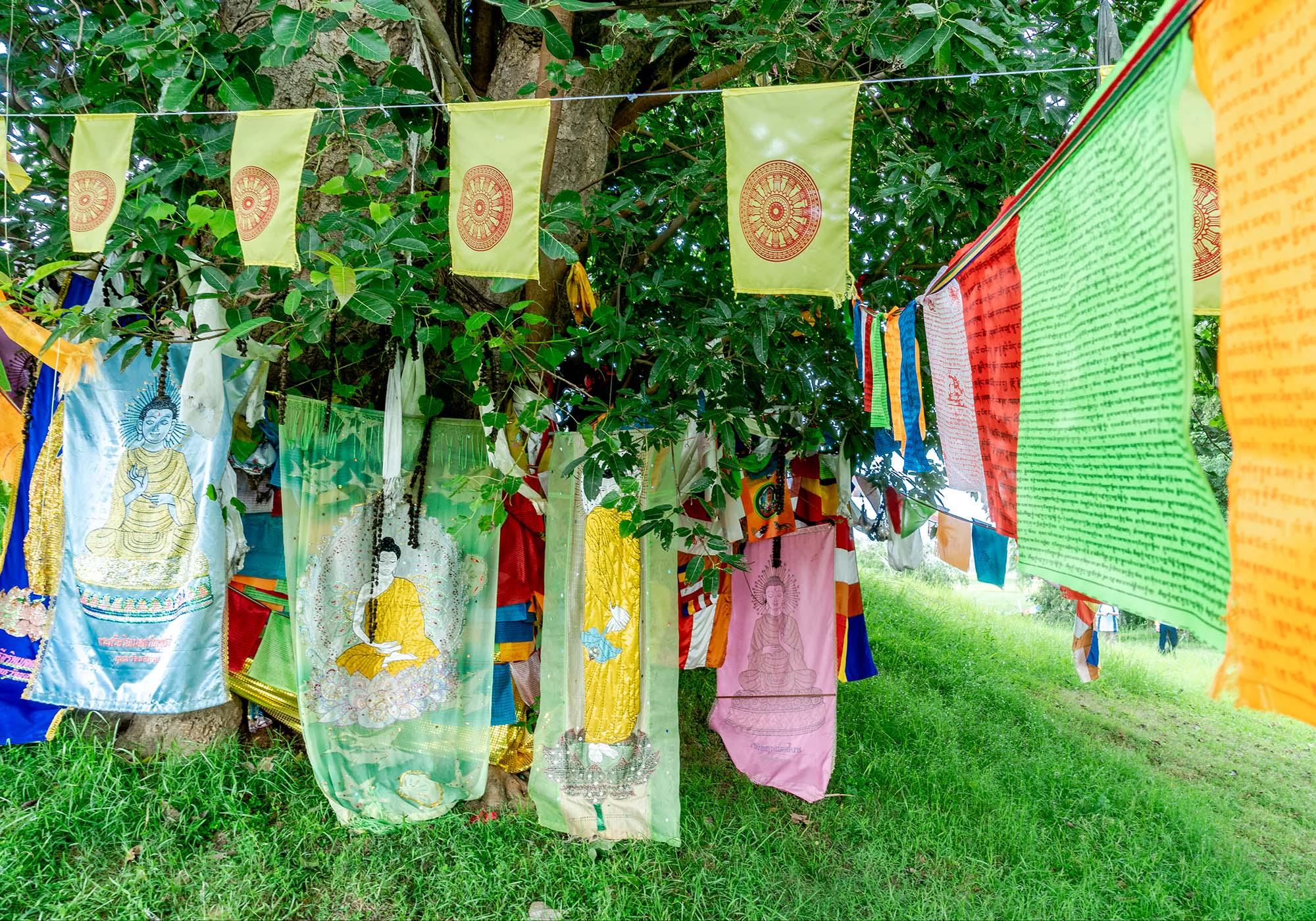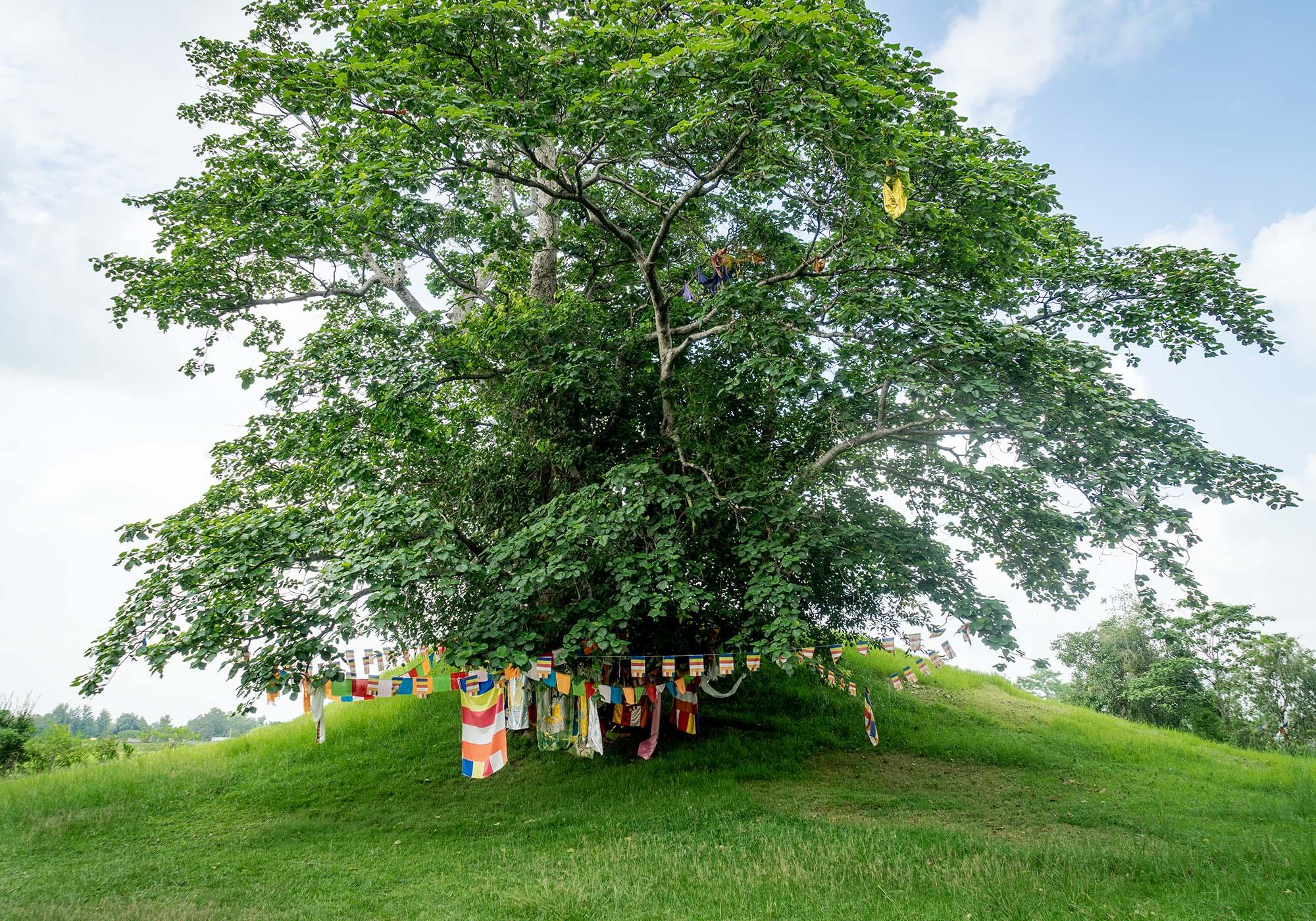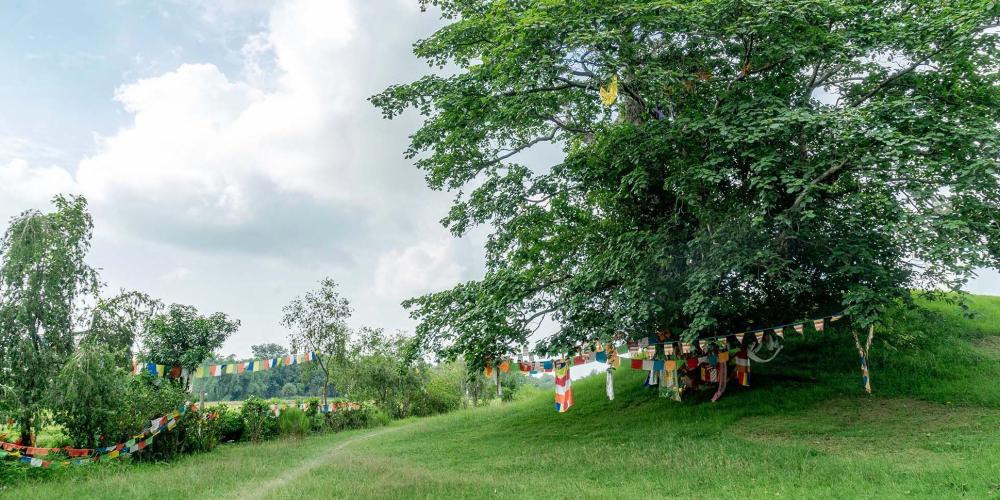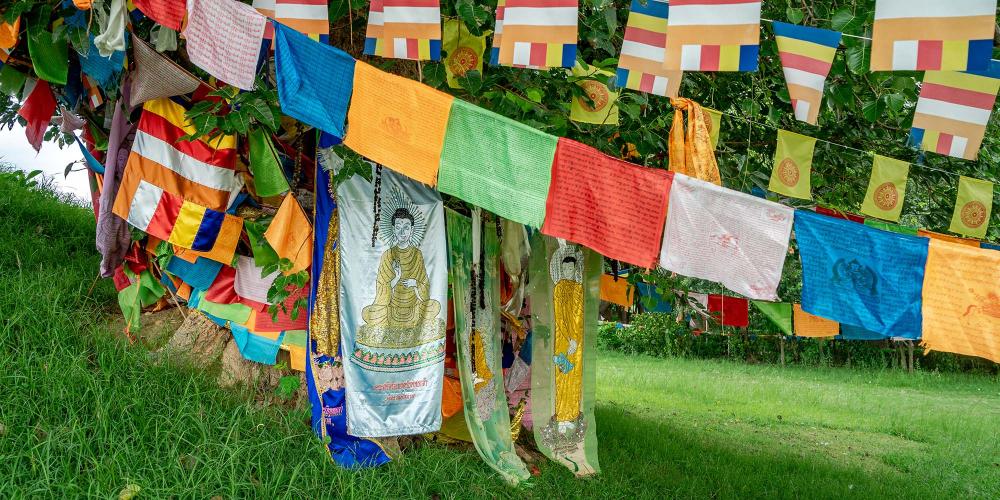Ramagrama Stupa

It’s said that when Buddha died, his body was cremated and the remains were distributed to eight kingdoms. Each of these kingdoms buried the relics of Buddha in their own stupa. In the years since, all but one of them have been opened and the contents distributed across the world. The stupa that has never been opened is here at Ramagrama.

Legend says that Emperor Asoka came to the stupa at Ramagrama in 249 BC and planned to open it and retrieve the relics of Buddha. But, when he arrived, he had a vision of a snake god that told him not to interfere with the site, and so he left it alone and worshipped at it instead.
Today, all you’ll be able to see is a grassy mound but excavation work has determined that there is a stupa within it. Although experts have studied the site, there is an agreement to not open the stupa, to maintain its sanctity.

When you visit, you’ll also notice a large tree rising up from the mound. In fact, if you look closely, you’ll realise there are actually four trees of different species, intertwined and living in harmony. For pilgrims, it’s an important symbol that reflects the ideal of Buddhism.




